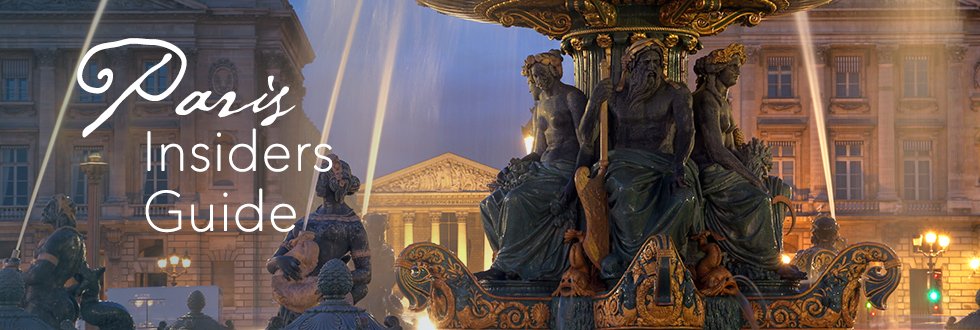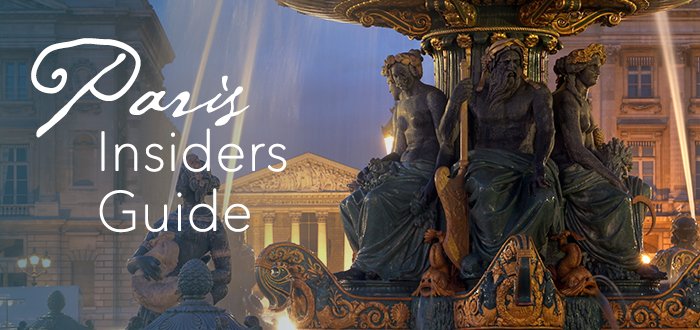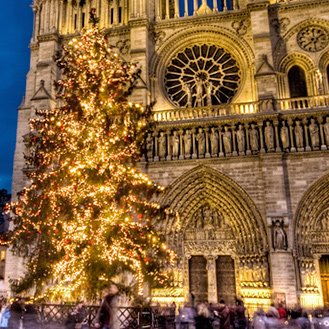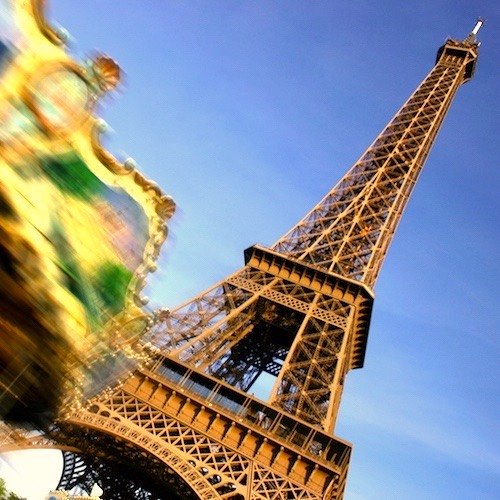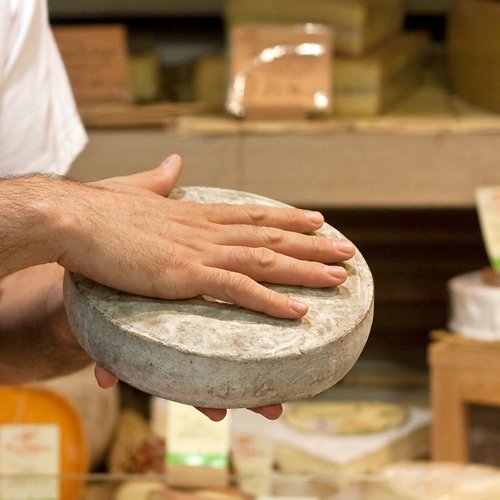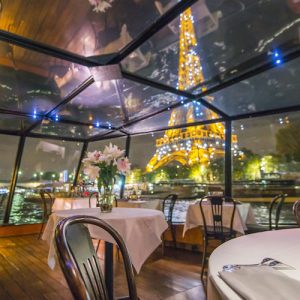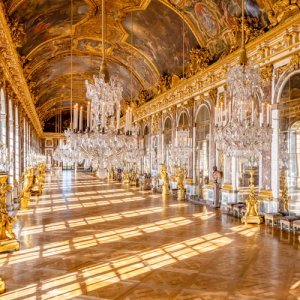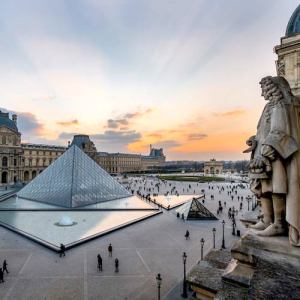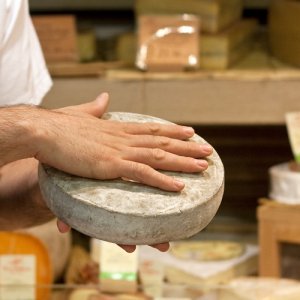The Stravinsky Fountain Paris – Whimsical Art Meets Musical Genius
Neighboring Centre Pompidou, the Stravinsky Fountain in Paris brings a splash of color and a burble of sound to the city's cultural heart. This remarkable public artwork combines the playful designs of artists Niki de Saint Phalle and Jean Tinguely with the spirit of Igor Stravinsky's music.
First inaugurated back in 1983, the fountain has become a lively space where modern art and music unite. Cafes line one side of the place, giving it an upbeat vibe all day long. Recent renovations to the fountain have returned it to its former glory, ensuring the bold & wacky sculptures and kinetic elements can continue to delight Paris pilgrims for years to come.
The Spirit of the Stravinsky Fountain Paris
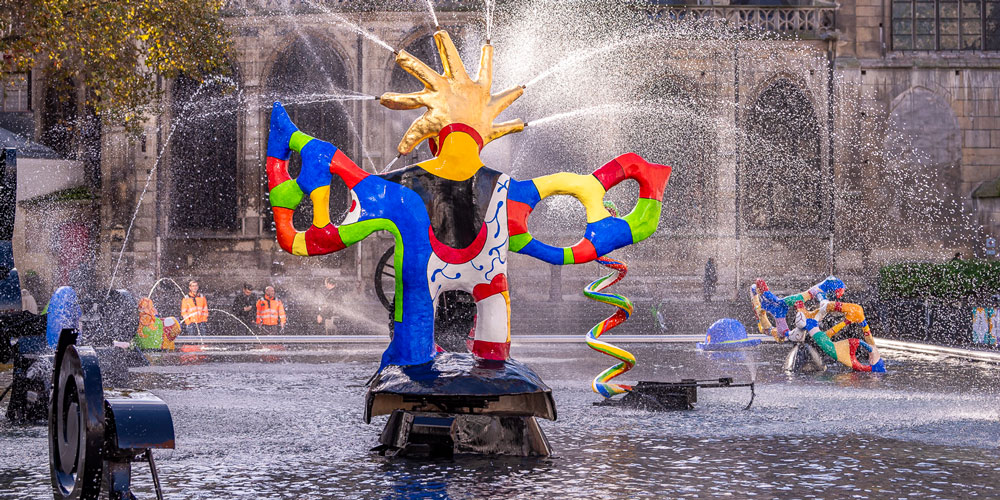 The brightly colored sculptures of the renovated Stravinsky Fountain, photo Ville de Paris
The brightly colored sculptures of the renovated Stravinsky Fountain, photo Ville de Paris
Set within Place Igor Stravinsky, this fountain serves as a tribute to the groundbreaking composer whose works reshaped the world of classical music. It's a place to linger, take in the bold beauty of the sculptures, and feel the pulse of Parisian creativity around you. Whether you're a fan of modern art or just wandering through the neighborhood, the Stravinsky Fountain Paris offers a feast for the senses.
The Stravinsky Fountain embodies everything that makes Paris special — bold creativity, respect for artistic pioneers, and a neverending passion for culture. The whimsical sculptures and vibrant energy invite you to pause, marvel, and connect with the city's artistic soul.
As you sit by the fountain, you'll hear the gentle trickle of water mingling with the hum of Parisian life. It's a place where modern art meets French inspiration, resulting in a space that's both playful and profound.
The Artistic Genius Behind the Stravinsky Fountain
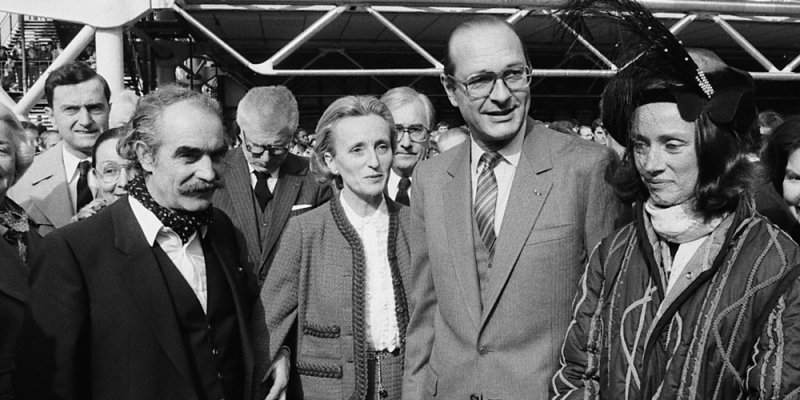 Inauguration of the Stravinsky Fountain, Jean Tinguely (L), President Jacques Chirac, Niki de Saint-Phalle (R)
Inauguration of the Stravinsky Fountain, Jean Tinguely (L), President Jacques Chirac, Niki de Saint-Phalle (R)
In the early 1980s, the City of Paris decided to create a unique space near the recently completed Centre Pompidou. The fountain was conceived as a celebration of Igor Stravinsky's musical legacy. Artists Jean Tinguely and Niki de Saint Phalle were commissioned to design the project, bringing together Tinguely's mechanical expertise and Saint Phalle's bold, colorful style.
The result is vibrant ensemble of sixteen sculptures, each inspired by themes from Stravinsky's compositions. Tinguely's kinetic pieces add motion, while Saint Phalle's bright forms bring an almost dreamlike quality to the fountain. Together, they create a dynamic interplay of water, movement, and sound — an artistic nod to the composer's revolutionary works.
The fountain's location next to the Centre Pompidou is no coincidence. Georges Pompidou, President of France from 1969 to 1974, championed modern art and culture. His vision led to the creation of the Centre Pompidou, a hub for contemporary art and design.
Who Was Igor Stravinsky?
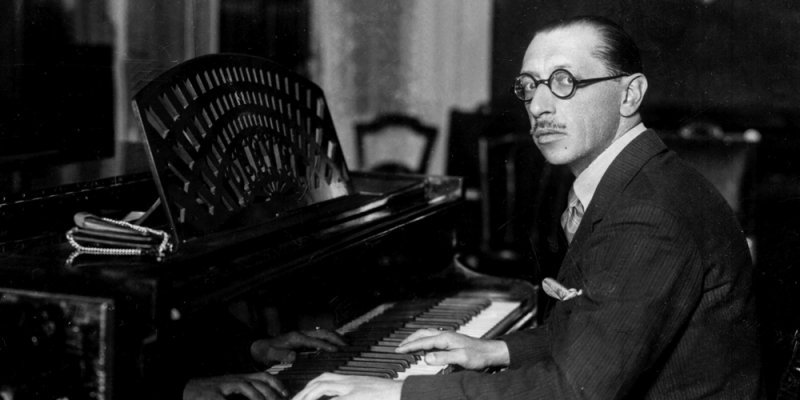 Igor Stravinsky at the piano, undated
Igor Stravinsky at the piano, undated
Igor Stravinsky (1882-1971) was a Russian-born composer whose groundbreaking works transformed the landscape of classical music. Known for compositions like The Firebird, Petrushka, and The Rite of Spring, Stravinsky's bold experimentation with rhythm and tonality left a lasting impact on 20th-century music.
So revolutionary was Stravinsky's work that the debut performance of The Rite of Spring in Paris on May 29, 1913, at the Théâtre des Champs-Elysées, became one of the most infamous nights in classical music history. Its jarring rhythms and avant-garde choreography so shocked the audience that it reportedly sparked a riot, with boos, shouts, and even physical altercations breaking out between spectators. The scandalous premiere cemented Stravinsky's reputation as a revolutionary force in music — and didn't do anything to hurt ticket sales either!
The Stravinsky Fountain Paris' playful yet complex design mirrors the innovative spirit of its namesake. Just as Stravinsky pushed boundaries in music, the artists behind the fountain employed modern techniques to create something truly unique. Today, the fountain remains visual symphony, paying homage to the composer's lasting influence.
The Recent Renovation That Revived Its Charm
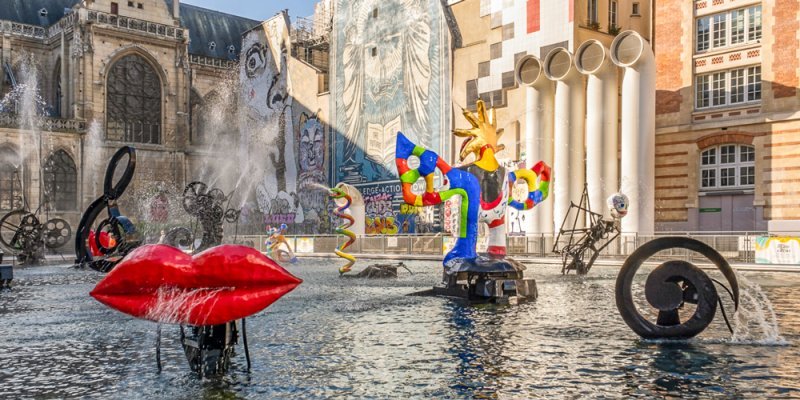 Some of the 16 sculptures of the Stravinsky Fountain, photo Ville de Paris
Some of the 16 sculptures of the Stravinsky Fountain, photo Ville de Paris
Time and the elements took their toll on the fountain's sculptures and mechanical components. So, in 2022, a significant restoration project began to address issues of wear and tear. This ambitious undertaking involved cleaning, repairing, and repainting each piece of each sculpture to restore the vivid colors and functionality.
The renovation also modernized the fountain's water system, making sure it will operate smoothly for years to come. After nearly two years of meticulous work, the restored Stravinsky Fountain was unveiled in 2023, an enduring example of public modern art next to France's temple to the genre — Centre Pompidou.
Centre Pompidou Renovations 2025
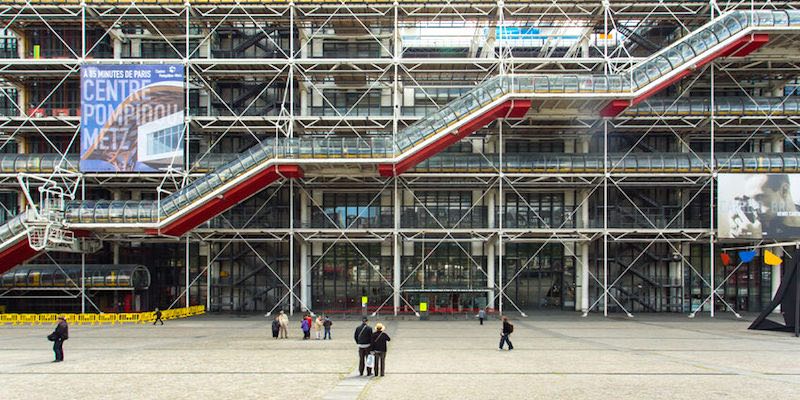
The Centre Pompidou is slated to undergo extensive renovations from 2025 to 2030, but not to worry! While the museum will close during that period, the Stravinsky Fountain and the cafes next to it are expected to remain accessible. Just watch out for maintenance work that may occasionally limit access to protect the fountain during the larger works.
The good news is that, during this period, the City of Paris has planned initiatives to keep the area lively, including outdoor art installations and performances near the fountain. You will still be able enjoy this whimsical space — part of the city's rich cultural landscape.
Stravinsky Fountain Paris Resources
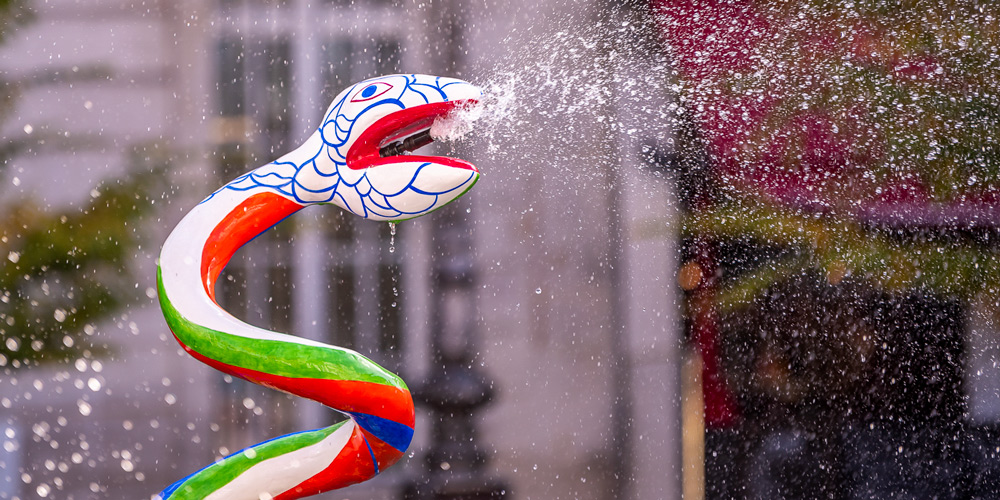 The Serpent, at the Stravinsky Fountain Paris, photo Ville de Paris
The Serpent, at the Stravinsky Fountain Paris, photo Ville de Paris
The fountain is located on Place Igor Stravinsky, a square that forms part of the cultural hub surrounding the Centre Pompidou in the 4th Arrondissement. The square itself is a vibrant spot, often filled with street performers, tourists, and locals enjoying lunch or a coffee in the artistic atmosphere.
Easily accessible from Metro stations like Rambuteau and Châtelet-Les Halles, the fountain is an easy stop during your exploration of the Marais. With the inside-out Centre Pompidou as its backdrop, the fountain's colorful sculptures somehow stand in a harmony with the building's industrial design.
- Rue Brisemiche
- 4th Arrondissement
- Metro: Rambuteau, Châtelet-Les Halles
- Crêperie Beaubourg, neighboring cafe…
PS. The Inspiration for Each of the 16 Sculptures
- THE FIREBIRD
This sculpture embodies the mythical and magical elements found in Stravinsky's ballet The Firebird, symbolizing transformation and renewal. - THE SPIRAL
This piece reflects the cyclical and dynamic nature of Stravinsky's musical compositions, where themes and motifs often evolve and transform. - THE KEY OF G
Representing the musical harmony and structure that Stravinsky often explored in his compositions, this sculpture highlights the intersection of music and visual art. - THE ELEPHANT
Inspired by the whimsical and playful aspects of Stravinsky's work, this sculpture may evoke the composer's fascination with circus and theatrical themes. - THE FOX
Symbolizing cunning and wit, this sculpture could be linked to Stravinsky's use of clever musical motifs and unexpected rhythms - THE SERPENT
Representing change and transformation, this sculpture reflects themes often present in Stravinsky's music, where traditional forms are reinvented. - THE FROG
This playful sculpture captures the lighthearted and humorous elements that Stravinsky sometimes incorporated into his compositions. - THE DIAGONAL
Embodying the innovative and unconventional approach Stravinsky took to musical composition, this sculpture represents the breaking of traditional boundaries. - DEATH
Reflecting the profound and introspective aspects of Stravinsky's work, this sculpture explores themes of mortality and the human experience. - THE MERMAID
Symbolizing the enchanting and mystical, this sculpture may draw inspiration from Stravinsky's exploration of mythological subjects in his music. - THE NIGHTINGALE
Inspired by Stravinsky's opera, this sculpture represents the beauty and melancholy often found in his musical explorations of love and longing. - LOVE
Capturing the emotional depth and passion that underpin many of Stravinsky's compositions, this sculpture embodies the universal language of love. - LIFE
Reflecting the vibrant energy and dynamism characteristic of Stravinsky's music, this sculpture celebrates the joy and vitality of life. - THE HEART
Symbolizing the emotional resonance and personal connection that listeners experience with Stravinsky's music, this sculpture highlights the heart's role in artistic expression. - THE CLOWN'S HAT
This sculpture reflects Stravinsky's fascination with the theatrical and the playful, often incorporating elements of circus and comedy into his works. - RAGTIME
Inspired by Stravinsky's experimentation with jazz and ragtime influences, this sculpture captures the rhythmic energy and modernity that defined much of his later work.
Paris Planning Guides
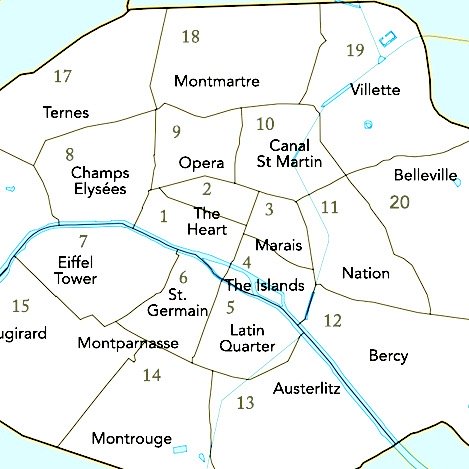 Paris Arrondissements
Paris Arrondissements |
 Left Bank Hotels
Left Bank Hotels |
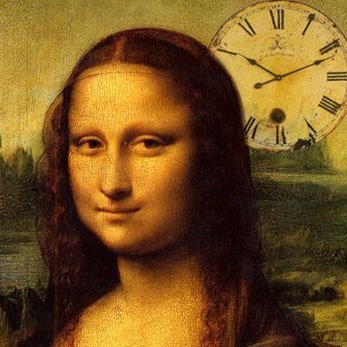 Skip the Museum Lines
Skip the Museum Lines |
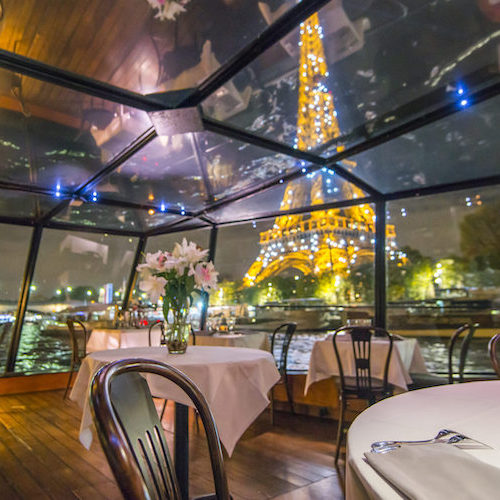 Glorious Dinner Cruises
Glorious Dinner Cruises |
